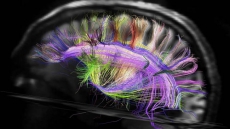TORONTO — The discovery that a gene which turns some bacteria into antibiotic-resistant superbugs has been in Canada for at least five years has scientists wondering when it first emerged and how to stop its spread.
The MCR-1 gene makes E. coli and some other species of bacteria resistant to colistin, an antibiotic considered the drug of last resort for some diseases.
The existence of the plasmid-mediated colistin resistance, or MCR-1, gene was first reported in November in the medical journal the Lancet after scientists identified it in E. coli samples taken from farm animals, meat sold in markets and hospital patients in China.
What makes MCR-1 so alarming is that rather than being tethered within a chromosome, the gene is found on a circular bit of free-floating DNA called a plasmid — which can easily be swapped between bacteria, thereby allowing more micro-organisms to fend off the killing effects of antibiotics.
"It's not only that certain strains of bacteria become resistant," said Gerry Wright, director of the Institute for Infectious Disease Research at McMaster University in Hamilton.
"Once the genie is out of the bottle, once they start moving around, then it becomes very, very challenging to contain. And so the question we have to ask ourselves is where's it going to end up next."
News that a new antibiotic-resistance gene had been discovered in China — it's since been found in several other countries — sent scientists at the Public Health Agency of Canada's National Microbiology Laboratory on a hunt for MCR-1 in more than 1,000 bacterial samples collected from hospitals and provincial public health labs.
The superbug gene did turn up: in E. coli from an Ottawa woman who had been treated for a likely unrelated intestinal disorder in 2011 and two E. coli samples from beef sold in Ontario in 2010, prior to the Chinese samples, which were collected in 2011 and 2014.
The specimens involved were not the potentially deadly form of the bacteria known as E. coli O157, but a beneficial garden-variety strain carried on the skin and in the gut of humans and other animals.
Dr. Matthew Gilmour, scientific director general of the Winnipeg lab, said PHAC scientists are now looking at earlier samples to try to determine how far back MCR-1 was first present in Canada. The lab has also designed a test to detect the gene.
"We'll look back and we'll look forward too," Gilmour said Tuesday.
"First, going forward, we've developed a test that specifically screens for this gene MCR-1 and we can provide that to the provincial public health labs, so there's local capacity across the country to rapidly detect any cases that might have this particular trait.
"But there's also this interest in looking further back, in looking at more isolates to see what is the history of this. Where has it come from? What areas of the country has it affected?"
So far, there have been no deaths in Canada related to antibiotic resistance conferred by the gene.
Wright, who first heard about MCR-1 from the Lancet report, has also begun studying the gene, with the goal of finding a means to stop it from being passed from one bacteria to another.
"What we want to be able to do, now that we know this gene is here and it's a potential threat to human health, we want to be able to see if we can find a molecule that blocks MCR-1's activity," he said. "If we can find such a molecule, then we'll be able to combine it with colistin so you could still use that drug."
He said the nightmare scenario that scientists fear most is if MCR-1 found its way into a bacteria already affected by another plasmid-based gene called NDM-1.
That gene, which creates resistance to commonly used antibiotics known as carbapenems — drugs in the same family as penicillin but several generations away — was first discovered in India and quickly showed up in bacteria in Europe, Asia and elsewhere.
"When NDM popped up, we reached back into the past to the old drug colistin," said Wright, explaining that the drug was around in the 1950s but was little used by doctors because of toxic side-effects.
If MCR-1 and NDM-1 were to combine in certain bacteria, "then you'd have a situation where you can't use any penicillin-like antibiotic, including the carbapenems," he said. "And you can't use colistin anymore.
"So now if you add colistin resistance to the mix, then you're in a situation where you have no drugs. And either you're going to get better or you're not."
Wright said Canadians shouldn't panic, but they should be concerned about the existence of MCR-1 because its emergence adds to the growing phenomenon of bacterial resistance to often life-saving antibiotics.
That drug resistance has developed in large part because of inappropriate and widespread use of antibiotics to fatten up beef cattle, pigs and chickens for consumption — an agricultural practice that Wright said should be banned.
"It wouldn't be such a big deal if we had a big arsenal of antibiotics, but we don't," he said of MCR-1 and other resistance-conferring genes. "There are no new antibiotics coming to market.
"So that's the reason to be scared. This has the potential to affect us all."





